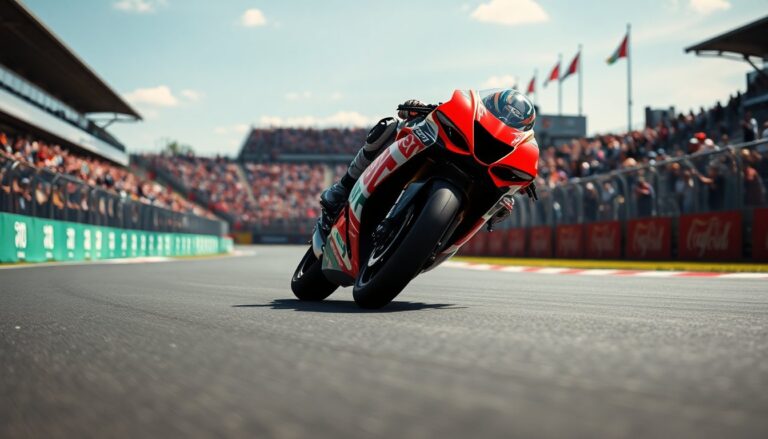Argomenti trattati
The MotoGP series stands as the pinnacle of motorcycle racing, captivating fans globally with its thrilling competition and advanced technology. Established in 1949, MotoGP has evolved into a prestigious championship that showcases the skills of the world’s top riders and manufacturers. The sport’s evolution reflects advancements in engineering, safety, and rider expertise.
MotoGP features three classes: MotoGP, Moto2, and Moto3, each serving as a pathway for riders aiming to reach the sport’s highest level. The championship encompasses not only speed but also strategy, teamwork, and the relentless pursuit of excellence. This article explores the intricacies of MotoGP, highlighting its history, the technology behind the bikes, and the influence of its star riders.
The history and evolution of MotoGP
Since its inception, MotoGP has undergone significant transformations. Initially known as Grand Prix motorcycle racing, it became the FIM Road Racing World Championship Grand Prix in 1949. The series has seen technological improvements, transitioning from two-stroke engines to the current dominance of four-stroke motorcycles. In 2002, the series was rebranded as MotoGP, with the top class adopting new regulations to enhance competition.
Key milestones in MotoGP history
Throughout its history, MotoGP has witnessed remarkable milestones. The introduction of electronic systems in the mid-2000s revolutionized bike performance, enabling riders to optimize their racing strategies. The championship has also seen the emergence of legendary riders such as Giacomo Agostini, Valentino Rossi, and Marc Márquez, each leaving an enduring legacy in the sport. The fierce rivalries and unforgettable races have enriched the narrative of MotoGP.
Technology at the forefront of MotoGP
The success of MotoGP is attributed not only to the talent of its riders but also to the advanced technology integrated into the bikes. Each manufacturer, including Yamaha, Ducati, and Honda, invests significantly in research and development to gain a competitive edge. The motorcycles are equipped with high-performance engines, aerodynamic fairings, and sophisticated electronic control systems.
The role of aerodynamics and electronics
Aerodynamics is crucial to the performance of MotoGP bikes. Engineers design fairings to minimize drag and enhance stability at high speeds. Additionally, the incorporation of traction control, anti-lock braking systems, and power mapping allows riders to maximize grip and control, especially in wet or slippery conditions. These technological advancements ensure that every race is not only a test of speed but also a demonstration of engineering excellence.
The allure of MotoGP: A global phenomenon
MotoGP is more than a sport; it is a global phenomenon that attracts millions of fans worldwide. The championship visits iconic circuits such as Laguna Seca, Mugello, and the Isle of Man, each presenting unique challenges and thrilling races. The atmosphere at these events is electric, with fans passionately supporting their favorite teams and riders.
The sport’s accessibility through various broadcasting platforms has further contributed to its popularity, allowing fans to witness every exhilarating moment from the comfort of their homes. Social media has amplified this engagement, enabling fans to interact with riders and teams, fostering a vibrant community that shares a passion for motorcycle racing.
MotoGP represents the pinnacle of motorcycle racing, merging history, technology, and a dedicated fanbase. As the championship continues to evolve, it promises to deliver even more excitement, pushing the boundaries of what is possible on two wheels. Whether you are a lifelong fan or new to the sport, the world of MotoGP is filled with adrenaline, innovation, and unforgettable moments.

